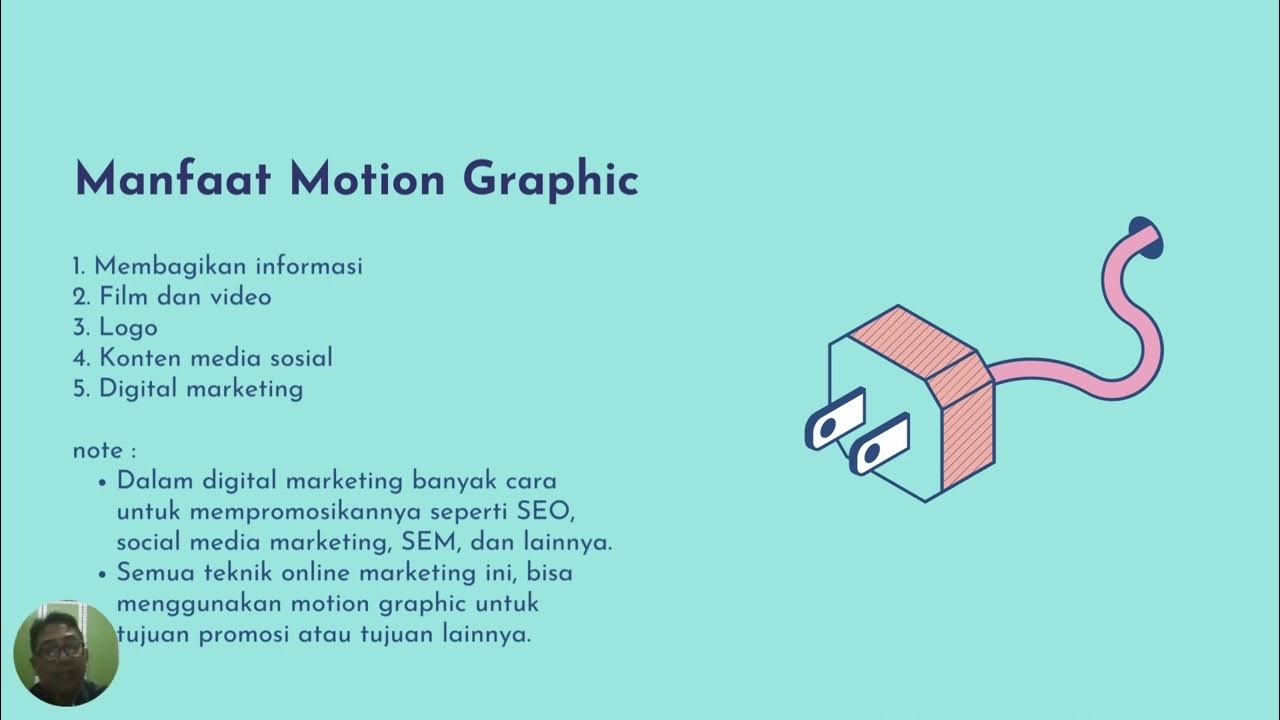What is Motion Design? Benefits, Use Cases & More
Summary
TLDRThis video script offers an insightful exploration of motion design, highlighting its role as a dynamic subset of graphic design that combines animation, video production, and graphic principles to communicate stories more effectively. The discussion covers the variety of motion design types, including animated, video-based, and mixed forms, and how they are used in branding, promotion, and emotional connection. Experts also touch on the strategic application of motion design across platforms, from TV to social media, and emphasize its effectiveness in driving engagement, improving marketing performance, and boosting online shopping experiences.
Takeaways
- 😀 Motion design is a subset of graphic design that integrates animation and video production to enhance communication.
- 😀 Motion design helps to tell a deeper story and convey messages more effectively than static graphics or text alone.
- 😀 There are different types of motion design, including fully animated and mixed media (animation with live-action footage).
- 😀 Motion design is used for a variety of purposes, such as explainer graphics, emotive graphics, and promotional content.
- 😀 Explainer motion graphics educate viewers on a product, process, or concept.
- 😀 Emotive motion graphics aim to evoke emotional responses, commonly used in TV commercials and social media campaigns.
- 😀 Promotional motion graphics raise awareness about services, products, or initiatives, and are effective for brand launches.
- 😀 Motion design performs well on social media platforms, often gaining higher engagement and better visibility in algorithms.
- 😀 Motion content increases website engagement by keeping viewers on the page longer and encouraging exploration.
- 😀 Videos and animations are especially beneficial in e-commerce, as they help consumers make purchasing decisions and boost click-through rates.
- 😀 Live-action content is often used in traditional TV for relatability, while motion graphics are more common on platforms like Instagram, where dynamic content stands out.
Q & A
What is motion design and how does it differ from graphic design?
-Motion design is a subset of graphic design that incorporates animation and video production. Unlike static graphic design, motion design uses movement, sound, and visuals to create a more engaging and dynamic way of communicating a message.
What are the primary uses of motion design?
-Motion design is primarily used for explainer graphics, emotive graphics, and promotional graphics. Explainer graphics educate audiences on products or processes, emotive graphics evoke emotional responses, and promotional graphics raise awareness for products, services, or initiatives.
How does motion design enhance storytelling?
-Motion design adds depth to the story by combining visuals with movement and sound. It allows for richer communication, helping to convey complex messages and emotions that might be difficult to express through static images or text alone.
Why is motion design particularly effective on social media platforms?
-Motion design is effective on social media because it grabs attention in a fast-paced, visually driven environment. The combination of animation, video, and graphics works well for quick, engaging content that users can easily consume while scrolling.
What is the difference between live-action and animated motion design in TV commercials?
-Live-action content is more common in TV commercials because it feels more relatable to the audience. However, animated motion design can also be used to break the mold and stand out, depending on the campaign's goals and target audience.
Why might animated motion design take longer to produce than live-action content?
-Animated motion design often requires more time to produce because it involves creating detailed animations, while live-action content can be filmed and edited more quickly. The production timelines are influenced by factors like animation complexity and the need for specialized talent.
How does motion design benefit marketing efforts?
-Motion design boosts marketing efforts by increasing visibility and engagement. Videos with motion content tend to perform better on social media algorithms, leading to higher click-through rates, increased time spent on pages, and improved brand awareness.
Why do videos tend to perform better in digital marketing campaigns than static images?
-Videos tend to perform better because they are more engaging, provide richer context, and can convey a story or message more effectively. Videos are also favored by social media algorithms, which prioritize motion content.
What is the impact of motion design on consumer behavior when shopping online?
-Motion design, such as product videos, helps consumers make more informed purchasing decisions. It enhances the shopping experience by providing visual context, building trust, and increasing the likelihood of conversion.
How does motion design contribute to higher click-through rates in email marketing?
-Motion design in emails, such as animated gifs, captures the reader's attention and guides them through the content. This dynamic visual appeal leads to higher engagement and can result in higher click-through rates.
Outlines

This section is available to paid users only. Please upgrade to access this part.
Upgrade NowMindmap

This section is available to paid users only. Please upgrade to access this part.
Upgrade NowKeywords

This section is available to paid users only. Please upgrade to access this part.
Upgrade NowHighlights

This section is available to paid users only. Please upgrade to access this part.
Upgrade NowTranscripts

This section is available to paid users only. Please upgrade to access this part.
Upgrade Now5.0 / 5 (0 votes)





